Sundogs and Rainbows
advertisement
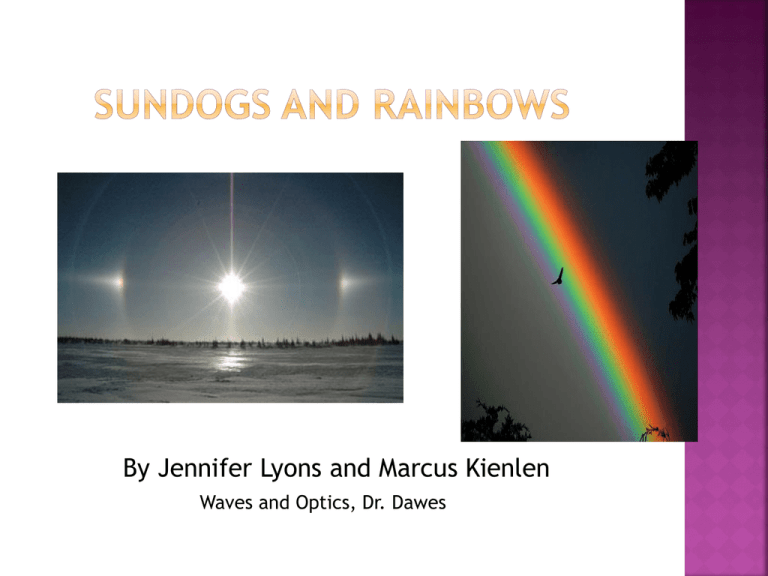
By Jennifer Lyons and Marcus Kienlen Waves and Optics, Dr. Dawes What are they? -An atmospheric phenomenon that creates bright spots of light in the sky, often on a luminous ring on either side of the sun. -Sundogs may appear as a colored patch of light to the left or right of the sun, 22° distant and at the same distance above the horizon as the sun, and in ice halos. -They can be seen anywhere in the world during any season, but they are not always obvious or bright. Sundogs are best seen and are most conspicuous when the sun is low. How do they form? - Sundogs form as sunlight is refracted by hexagonal plate-like ice crystals. The crystals drift and float gently downwards with their large hexagonal faces almost horizontal. --They are visible when the sun is near the horizon and on the same horizontal plane as the observer and the ice crystals. -As sunlight passes through the crystals, it is bent by 22 degrees before reaching our eyes. This bending of light results in the formation of a sundog. Red light is refracted less strongly than blue and the inner, sunward, edges of sundogs are therefore red hued. However, it is often so meshed together that it just appears as white light. The difference between sundogs and halos is the orientation of the ice crystals through which the light passes before reaching our eyes. If the hexagonal crystals are oriented with their flat faces horizontal, a sundog is observed. If the hexagonal crystals are randomly oriented, a halo is observed How they are formed: The light enters the raindrop and is initially refracted. The most intense light is then reflected off of the back of the raindrop. The light then exits the raindrop and is refracted again. The angle of incident light, to exiting light is between 40-42 degrees. Blue light is refracted at a greater angle than red light, but due to the reflection of light rays from the back of the droplet, the blue light emerges from the droplet at a smaller angle to the original incident white light ray than the red light. Due to this misalignment of colors we are able to see a rainbow. With the sun is low and behind you. All the sunbeams head in, strike the cloud of water droplets ahead of you and bounce back at an angle of 40-42 degrees. Naturally the beams can bounce 40 degrees any which way--up, down, and sideways. But the only ones you see are the one that lie on a cone with a side-to-axis angle of 40 degrees and your eyes at the tip. 40 The position of a rainbow depends on the observer's location and the position of the Sun, it is not an actual location in the sky. This makes finding that pot of gold impossible . The light that reaches the observer makes up the rainbow for that observer. Thus every observer sees a different rainbow. •The inside of the rainbow appears brighter because more light emerges from the rain drop at a smaller angle than the rainbow ray. •If the Sun is higher than 42 degrees, rainbows generally can’t be seen unless the observer is high off the ground (in a plane or at a waterfall) •Double rainbows are formed when the light in the raindrop gets reflected inside the raindrop again, with a total reflected angle of 50 degrees, rather than the 42 degrees of the primary rainbow. The colors of the double rainbow appear in reverse order since the blue light is bent more. •Reflective glass beads, used in road paint, scattered on ground act as water droplets to produce a “glory.” •A glory is created in essentially the same way a rainbow is except with a much smaller (520 degrees) total reflected angle. •It can only be seen when the observer is directly between the Sun and the water droplets (or in this case, reflective glass beads) Sundogs: 1) http://ww2010.atmos.uiuc.edu/%28Gh%29/guides/mtr/op t/ice/sd.rxml\ 2) http://www.atoptics.co.uk/halo/parhelia.htm 3) http://hyperphysics.phyastr.gsu.edu/hbase/atmos/halo22.html Rainbows/glories: 1) http://thisisnotanexitclub.blogspot.com/2010/07/mystic-rockdouble-rainbow.html 2) http://eo.ucar.edu/rainbows/ 3) http://antwrp.gsfc.nasa.gov/apod/ap040913.html 4) http://www.deltatech.com/rv/rainbows.html 5) http://www.atoptics.co.uk/droplets/gloab.htm
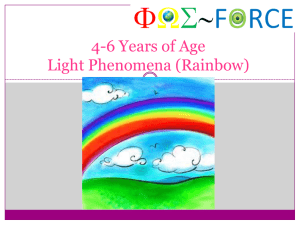
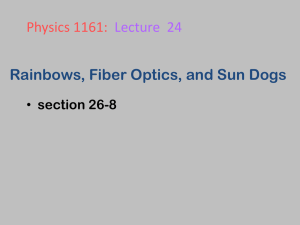
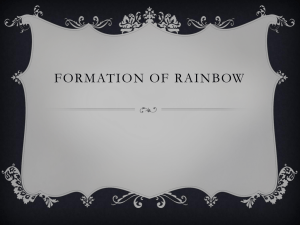
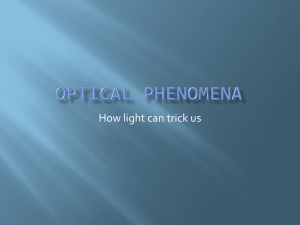


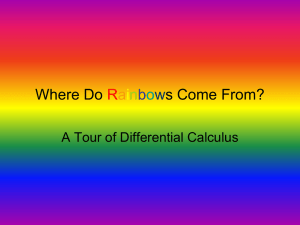
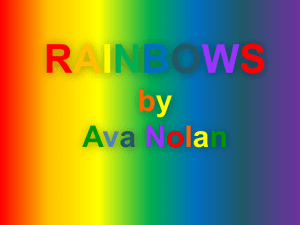
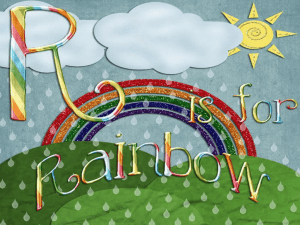
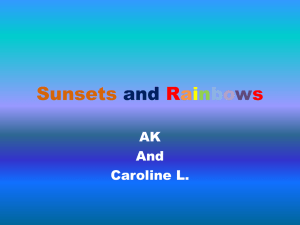
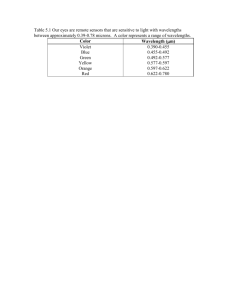
![Rainbow Sandals[1]](http://s2.studylib.net/store/data/005415944_1-86d746c06518ebd8de8a03e56a4931b4-300x300.png)